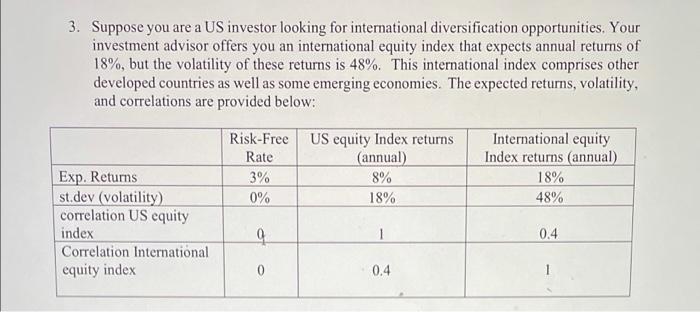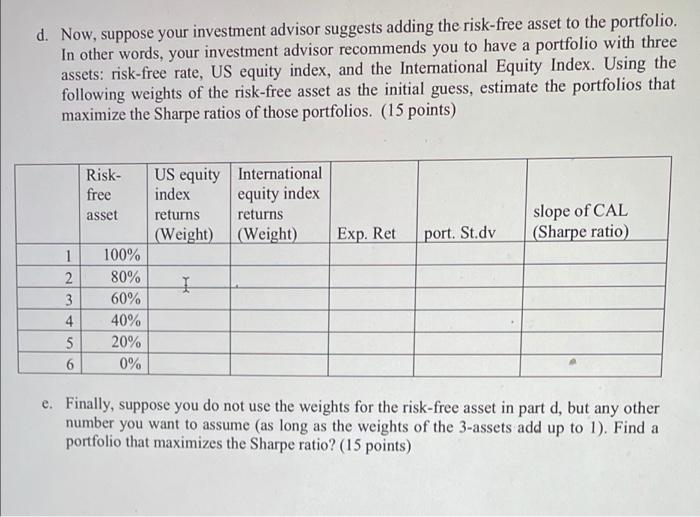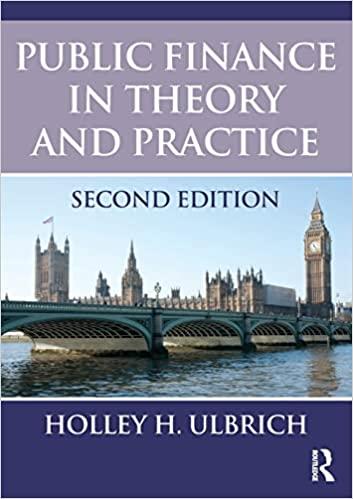3. Suppose you are a US investor looking for international diversification opportunities. Your investment advisor offers you an international equity index that expects annual returns of 18%, but the volatility of these returns is 48%. This international index comprises other developed countries as well as some emerging economies. The expected returns, volatility, and correlations are provided below: Risk-Free Rate 3% 0% US equity Index returns (annual) 8% 18% International equity Index returns (annual) 18% 48% Exp. Returns st.dev (volatility) correlation US equity index Correlation International equity index 9 0.4 0 0.4 d. Now, suppose your investment advisor suggests adding the risk-free asset to the portfolio. In other words, your investment advisor recommends you to have a portfolio with three assets: risk-free rate, US equity index, and the International Equity Index. Using the following weights of the risk-free asset as the initial guess, estimate the portfolios that maximize the Sharpe ratios of those portfolios. (15 points) Risk- free asset US equity International index equity index returns returns (Weight) (Weight) slope of CAL (Sharpe ratio) Exp. Ret port. St.dy 1 1 2 3 4 5 6 100% 80% 60% 40% 20% 0% e. Finally, suppose you do not use the weights for the risk-free asset in part d, but any other number you want to assume (as long as the weights of the 3-assets add up to 1). Find a portfolio that maximizes the Sharpe ratio? (15 points) 3. Suppose you are a US investor looking for international diversification opportunities. Your investment advisor offers you an international equity index that expects annual returns of 18%, but the volatility of these returns is 48%. This international index comprises other developed countries as well as some emerging economies. The expected returns, volatility, and correlations are provided below: Risk-Free Rate 3% 0% US equity Index returns (annual) 8% 18% International equity Index returns (annual) 18% 48% Exp. Returns st.dev (volatility) correlation US equity index Correlation International equity index 9 0.4 0 0.4 d. Now, suppose your investment advisor suggests adding the risk-free asset to the portfolio. In other words, your investment advisor recommends you to have a portfolio with three assets: risk-free rate, US equity index, and the International Equity Index. Using the following weights of the risk-free asset as the initial guess, estimate the portfolios that maximize the Sharpe ratios of those portfolios. (15 points) Risk- free asset US equity International index equity index returns returns (Weight) (Weight) slope of CAL (Sharpe ratio) Exp. Ret port. St.dy 1 1 2 3 4 5 6 100% 80% 60% 40% 20% 0% e. Finally, suppose you do not use the weights for the risk-free asset in part d, but any other number you want to assume (as long as the weights of the 3-assets add up to 1). Find a portfolio that maximizes the Sharpe ratio? (15 points)








